Nowadays, “Old Money” as a concept is everywhere, and it can sometimes get out of hand. So, with all the hype, you might be wondering, what does it actually mean, and how does it relate to classic style? They do seem similar on the surface, so we’ll examine how Old Money aesthetics relate to classic style and if they are potentially the same thing.
Defining “Old Money” as a Concept
To start answering these questions, though, we first have to tackle what exactly “Old Money” means, and before we can define the Old Money aesthetic specifically, we should first define the broader Old Money concept.
Broadly speaking, then, Old Money refers to family dynasties that benefit from inherited wealth. Then, from this wealth, they derive status, influence, and significance. Technically speaking, Old Money is distinct from the concept of a “noble aristocracy,” where privilege in society is derived from noble birth and titles. In fact, Old Money is often associated with societies that have no aristocracy with the United States being a prime example.
[TAG0]The U.S. Constitution has a Titles of Nobility clause that prohibits the federal government from granting titles of nobility.
Of course, Old Money is invariably contrasted with “New Money.” This, in turn, refers to families that possess equal or perhaps even greater wealth but have not yet, through time, become acclimated to the customs and norms associated with Old Money. But, with sufficient time and influence, some New Money families have become Old Money families. For example, you can think of the Astors, Rockefellers, or Kennedys.
Defining the Old Money Aesthetic
The Old Money aesthetic – or OMA as we’ll be referring to it for the rest of this guide – is related to but distinct from the broader Old Money concept. Essentially, it’s the cultural perception of what Old Money wears, and it’s defined not only by historical realities but also by modern-day assumptions.
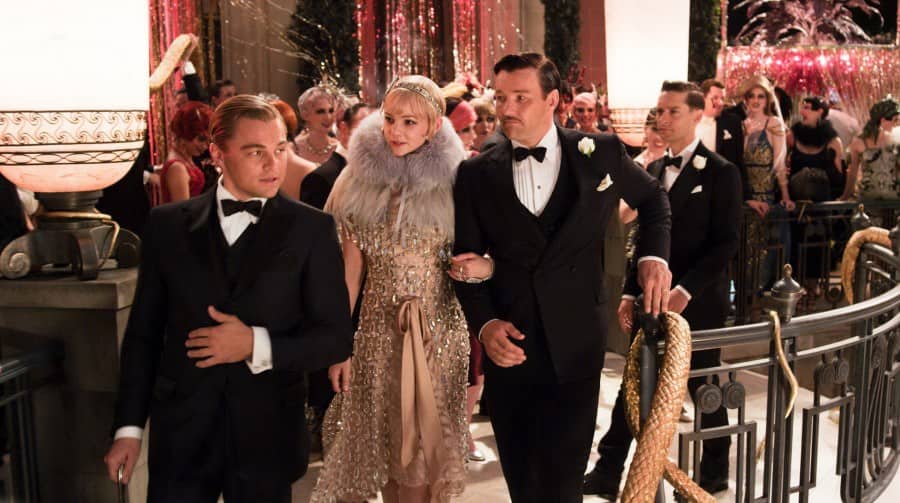
Both the characters of Tom Buchanan and Jay Gatsby in The Great Gatsby dress like Old Mone, but only one is Old Money.
For instance, to most modern-day onlookers, both the characters of Tom Buchanan and Jay Gatsby from The Great Gatsby dress like Old Money, but a major theme of the story is that Jay Gatsby is actually New Money and hasn’t embraced the traditions or social niceties of Old Money as evidenced in the famous “pink suit scene.”
Conversely, Lord Grantham from Downton Abbey is renowned for his passionate dedication to wearing the proper dinner shirt. But, as a titled nobleman, he technically isn’t Old Money either as his status comes from his title and not from, technically, his wealth.
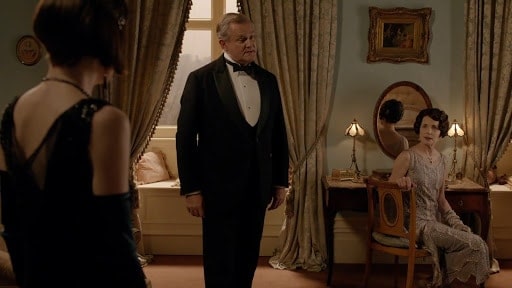
Downton Abbey Lord Grantham in a proper dinner shirt.
So, here we have three characters who could all be associated with the Old Money aesthetic, even though only one of them is technically “Old Money.” This illustrates an essential point today: that contemporary notions of the OMA are broader than what Old Money actually wears and that anyone can dress according to OMA conventions.
Old Money Aesthetic Stylistic Hallmarks
When it comes to defining what Old Money looks like, some people simply say, “I know it when I see it,” but have difficulty defining it.
A similar sentiment is associated with identifying Classic Style, but fortunately, we’ve already made another guide defining what classic style is and is not.
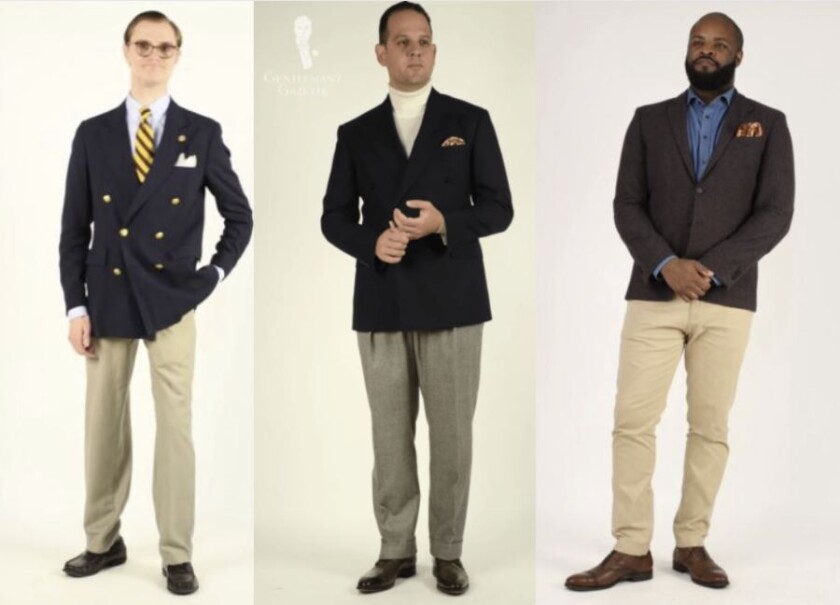
The Gentleman’s Gazette hosts in an old money ensembles.
So, we’ll now go over what we consider to be the stylistic hallmarks of OMA, which do share considerable overlap with classic style.
1. Subtle and Unassuming
As Illustrated in our Great Gatsby example, flashy attire like a pink suit isn’t typical of OMA because it says – or seems to imply – that you have something to prove, while the true Old Money aesthetic doesn’t have anything to prove. After all, if you can retreat back to all of that money, there’s a certain carelessness that can come along with this.
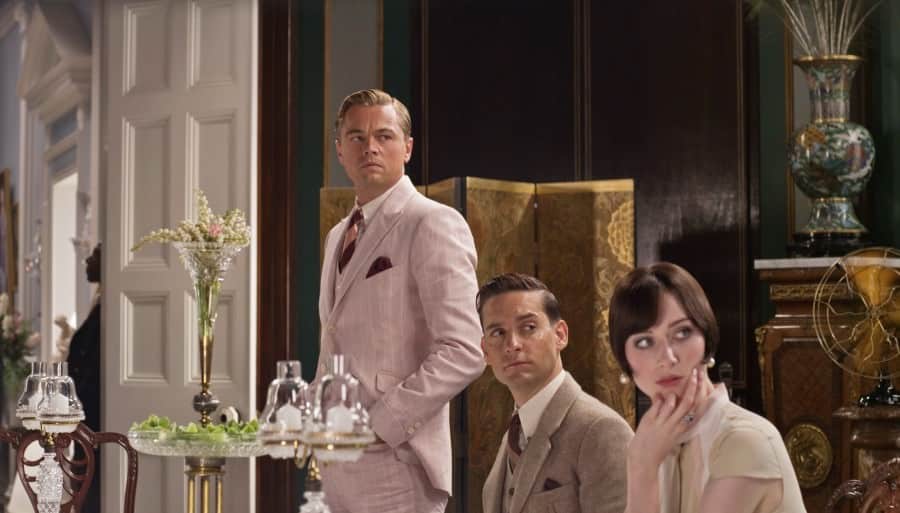
Gatsby’s iconic pink suit
OMA, therefore, makes an impression through its finer details like fabrics of exceptional quality, exquisitely elegant lines, and perfect drape and fit. Here, we can introduce the tangential topic of “Quiet Luxury,” which refers to goods that communicate their quality through their materials and not through flashy labels.
So, while not all Quiet Luxury products are OMA, many OMA pieces will exude that “quiet luxury.”
2. Memorable
OMA does make an impression, but not in a striking way that causes people to stop and stare on the street. Instead, OMA creates a subtle fixation that causes others to have thoughts like, “Wow! Kyle is a really elegant dresser, but I can’t put my finger on exactly why.” This nuanced memorability then speaks to the innate allure of a well-crafted OMA ensemble.
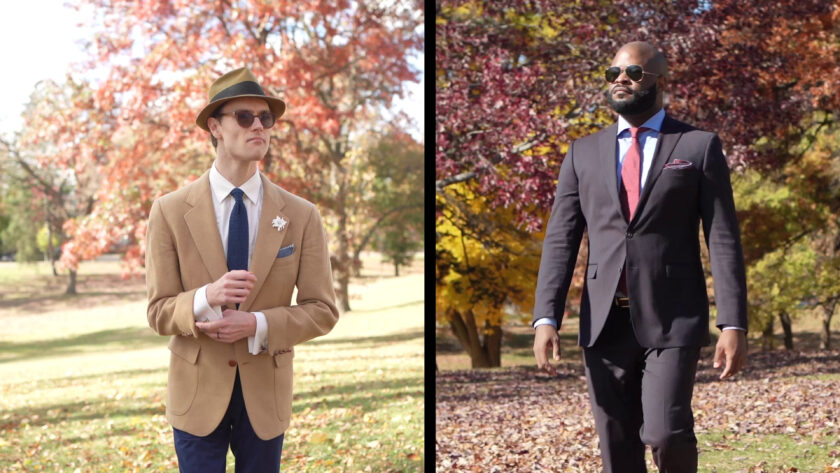
Preston and Kyle are wearing clothes in their correct sizes and cut, giving them a better look and fit.
3. Timeless
Of course, timelessness is also a defining characteristic of classic style, indicative of the aesthetically pleasing patterns, proportions, and fits that make classic style classic. In addition to this factor, though, OMA also emphasizes the generational aspect of Old Money.
Here, time-tested styling conventions establish a sartorial connection to the past put another way: If granddaddy’s money is good enough for you, then the cut of his suit should be, too.
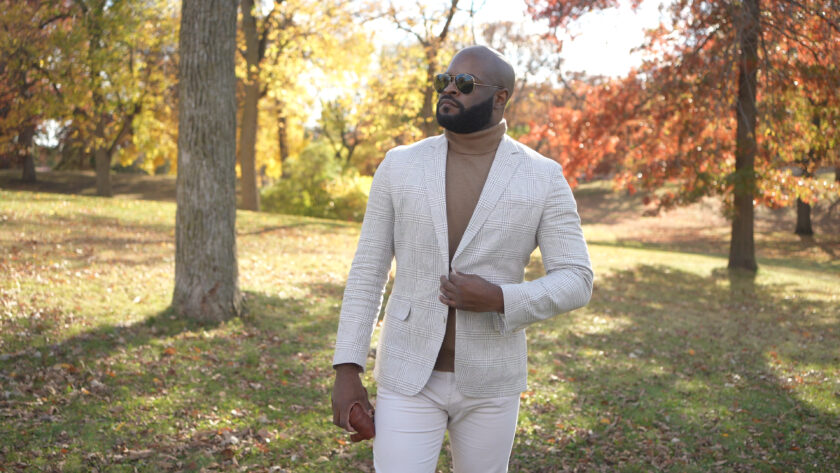
Kyle in a casual yet timeless look in the Minnesota fall
4. Quality
This is another value taken directly from classic style. As something of a long-term investment itself, Old Money understands the value that long-term Investments can have in one’s life, including an investment in one’s clothing.
Even if Old-money individuals could afford to buy new clothes every week, the Old Money aesthetic prefers to look for quality in clothing that will last a long time and look good all the while.
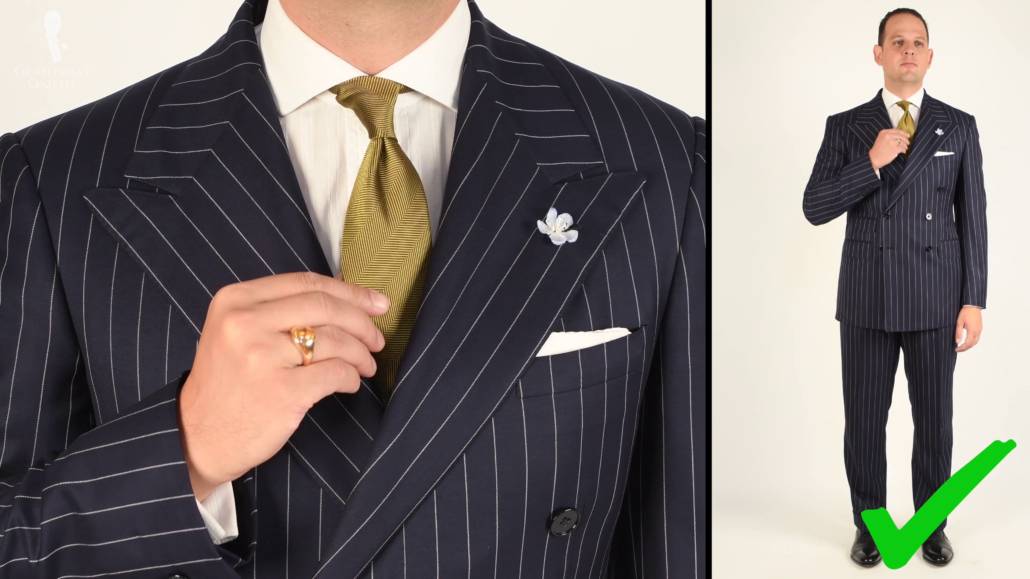
Have a quality-over-quantity approach when it comes to accessories, like this Light Blue Veronica Persica Boutonniere Buttonhole Flower Fort Belvedere.
OMA, in particular, is always willing to invest in an exceptional fit. After all, when you can afford bespoke clothing, everything you wear should look like it was made for you even if it wasn’t. And on that note, Kyle’s guidelines for perfect fit will help you to get that Old Money aesthetic no matter where your money came from.
Want Clothes With Perfect Fit? Follow These 10 Guidelines!
5. Personal
While it isn’t obtrusive or gaudy, OMA also isn’t boring and cookie-cutter. You can’t just buy a $500 brand monogrammed T-shirt and expect to fit in. OMA encourages a certain amount of creativity. In other words, cultivating a look that is within the conventions of Old Money styling but still unique to you.
This is often achieved through signature statement pieces like a garment, accessory, or way of dressing that you have entirely made your own.
[TAG8]Creating your style unique and stylish is among the tenets of OMA.
As another example, we can look at Dickie Greenleaf, a character from “The Talented Mr. Ripley” that well represents a youthful take on the Old Money aesthetic. As part of his laidback, athletic take on OMA, Dickie embraces many of the casual aspects of OMA, like sport shirts, linen dress shirts, and duck cotton trousers.
6. Lifestyle-Oriented
In addition to being personal, OMA is also cultural. This is because it reflects the recreations, pastimes, and experiences of Old Money individuals. So, you’ll see lots of collegiate looks, typical of Ivy and Prep styles; recreationally-inspired looks around hobbies like shooting or yachting; or more Cosmopolitan looks, typical of a jet-setting lifestyle, incorporating aspects of other cultures modes of dressing like English odd jackets or Italian spezzato.
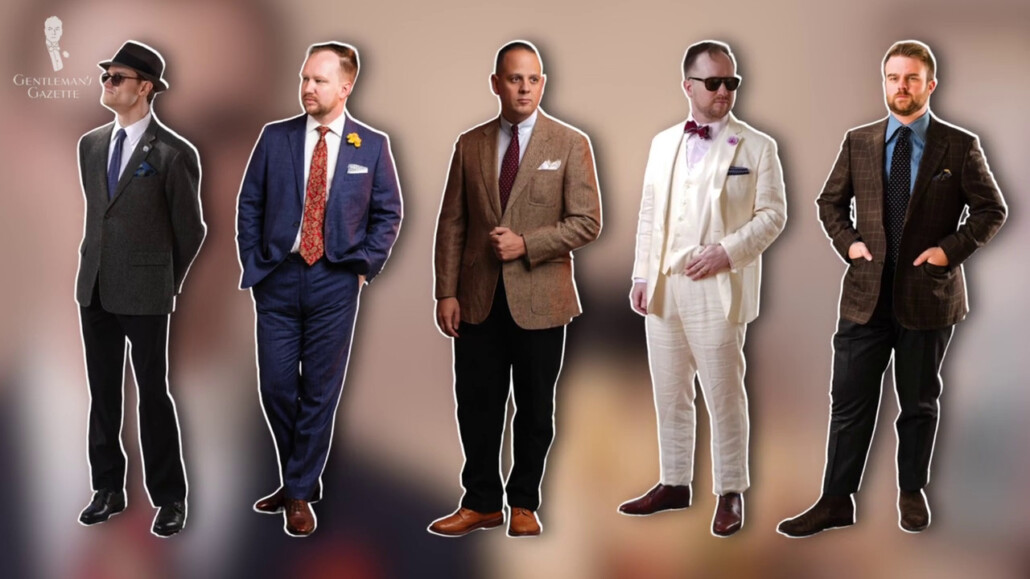
Dressing and creating a look that exudes class without being flashy.
Essentially, here, OMA involves dressing like you’re doing Old Money activities. For example, boating off the coast of Capri or taking tea with Mimsy Bancroft at the country club.
Spezzato: Breaking Up Suits for Casual Menswear Looks
7. Effortless
Simply put here, if you’ve had people to do everything for you all of your life, as Old Money often projects that it has, then everything you do should be easy and effortless and this includes dressing.
[TAG10]Kyle is in an outfit that flatters his body type
Some OMA doesn’t involve cramming yourself into skinny jeans, shoving your feet into pointy-toed shoes, or wearing suits so skinny, they’re basically only cut for a male model. Instead, it’s about finding clothes that suit your body type, complement it, and make you look and feel your best. This effortless effect is highlighted with the understated application of Italian sprezzatura, essentially ensuring that you are wearing your clothes and not the other way around.
Sprezzatura – What It is, DOs and DON’Ts
8. Appropriate
Dickie Greenleaf might wear a knit sport shirt and swim trunks while pulling an espresso, and Tom Buchanan might privately entertain friends in jodhpurs, but when it’s time to wear formal attire, both characters would get it exactly right and follow its conventions to the letter. This is because OMA is hyper-aware of time and place, being to the manner born of learning the complex aspects of Old Money while also in the “manor” born more literally.
[TAG11]Being consistent in dressing appropriately conveys a gold old money style.
Accordingly, then, there’s also an emphasis placed on age-appropriate dressing. This reflects the duties, maturities, and responsibilities of Old Money at every stage of life. Therefore, 5-year-olds in rakishly-cut, three-piece suits are not indicative of OMA – even if this little guy definitely does look sharp.
Conversely, sneakers aren’t appropriate for a typical OMA businessman either, much as he might want them to be,
9. More Formal
So, while OMA is aware of the dressing conventions of time and place and certainly wouldn’t do something like wearing a business suit to the beach, OMA is still considerably more formal in most cases than what the average person would be wearing at those same places and times.
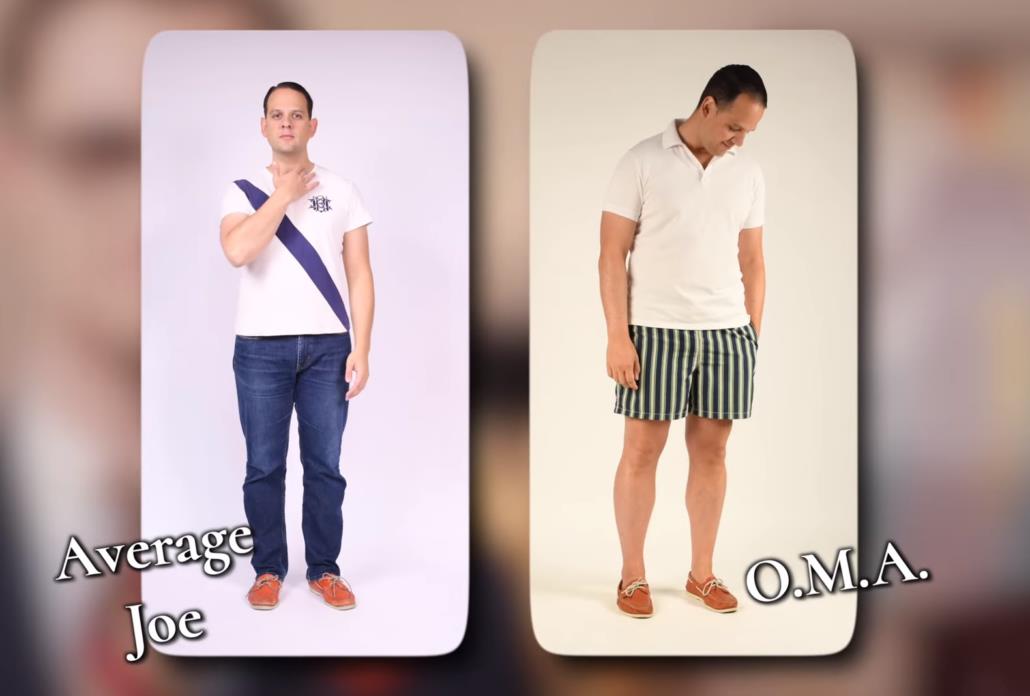
Men who incorporate features of old-school American preppy fashion and modern looser silhouettes.
In other words, in an effort to showcase its exceptionalism, OMA has largely defied the overall trend in society of the casualization of clothing. After all, a heightened sense of decorum and an increased formality are indicative of the broader Old Money lifestyle.
10. Inherited
In a nod to the inherited nature of the wealth of Old Money, we’ll close today by saying that Old Money styles and aesthetics are also inherited. This is chiefly expressed in the form of heirloom-grade articles like jewelry, leather goods, or timepieces. These are of sufficient quality to be passed down and are worn and treasured because of their legacy.
Even if you haven’t received any articles like these, you can start your own legacy by procuring pieces that you’ll want to pass down to your descendants; alternatively, you could “inherit” well-made vintage items by purchasing them secondhand as Raphael and I have done. Pieces like these certainly put the “old” in Old Money.
Vintage Menswear: 25 Tips & Tricks for Thrift Store Shopping
Are Classic Style and Old Money the Same Thing?
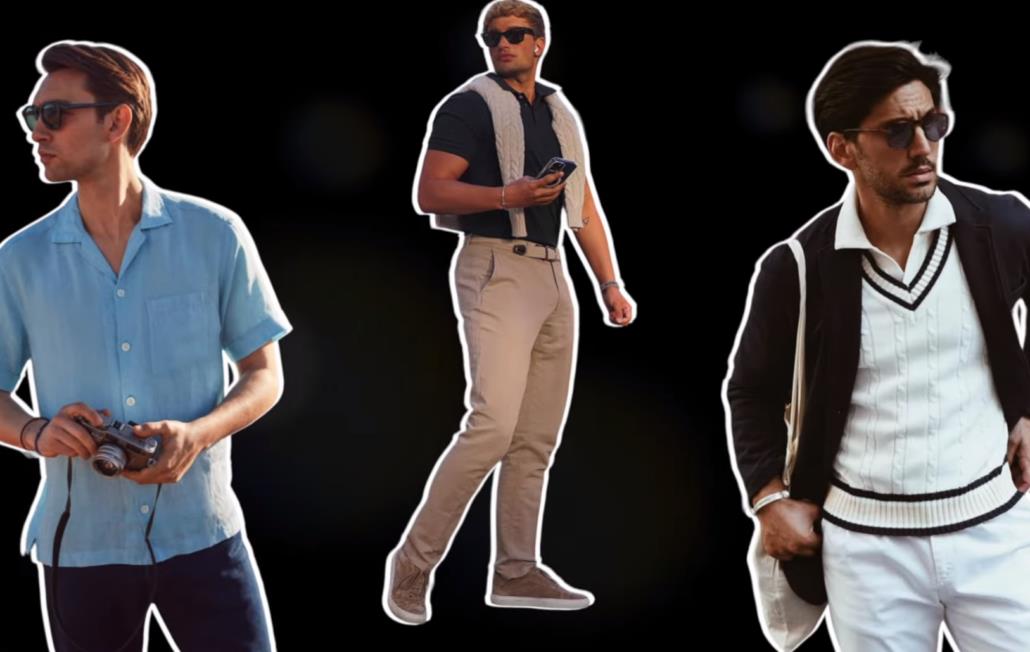
Old money aesthetic is more tempered and follows sartorial rules.
Now that we’ve examined the tenets of the Old Money aesthetic here and examined those of classic style in a previous guide, we can truly answer the question of if they’re the same thing.
It’s clear that the OMA does draw extensively from classic style, and, in most cases, Old Money looks are going to have quite a bit in common with classic style. But, with that said, we don’t think that the terms are truly interchangeable, and this is primarily because classic style encompasses a much broader field of looks and outfits than just the sector of Old Money aesthetics.
To illustrate this further, let’s use the example of our own Types of Gentleman Quiz; and by the way, if you haven’t taken that quiz yet, you can do so here. Using the categories we’ve defined then, Classic, Modern, and Aspiring Gentlemen might fit fairly easily into the Old Money aesthetic, while Vintage and Dandy Gentlemen might or might not.
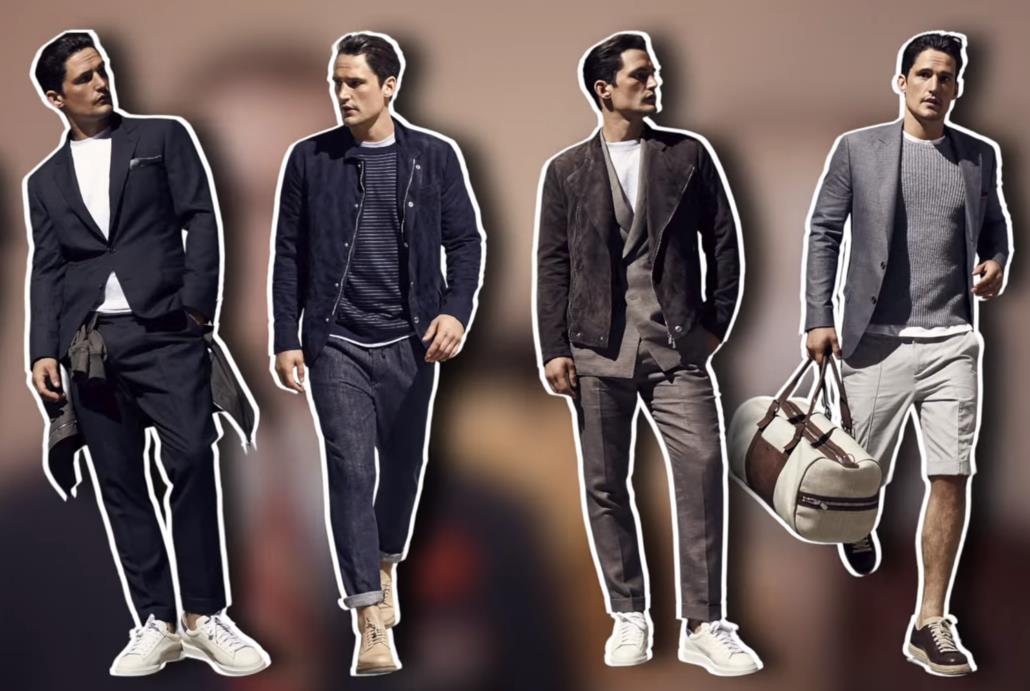
A go-to choice for many men due to its ability to convey an impression of stylish sophistication with minimal effort.
Even though not all of these categories are necessarily going to fit into the Old Money aesthetic, all of them are indicative of broader classic style, and we’ll also note here that the OMA can include several non-classic style looks. For example, extremely minimalistic or monochromatic looks are indicative of contemporary OMA, taking a more modern, paired-down approach to the Old Money aesthetic, and some Quiet Luxury looks can also be indicative of OMA while not necessarily fitting into classic style. The Loro Piana baseball caps featured on “Succession” would be a good example here.
Loro Piana Cashmere: Worth It? (Luxe Italian Fabric Review)
It should also be said that, somewhat ironically, the current hype around OMA, including its emphasis on showing off the increasing cookie-cutter nature of alleged OMA looks and the introduction of elements like baseball caps, sneakers, and T-shirts that are not historically associated with OMA – threatens to make OMA a parody of itself.
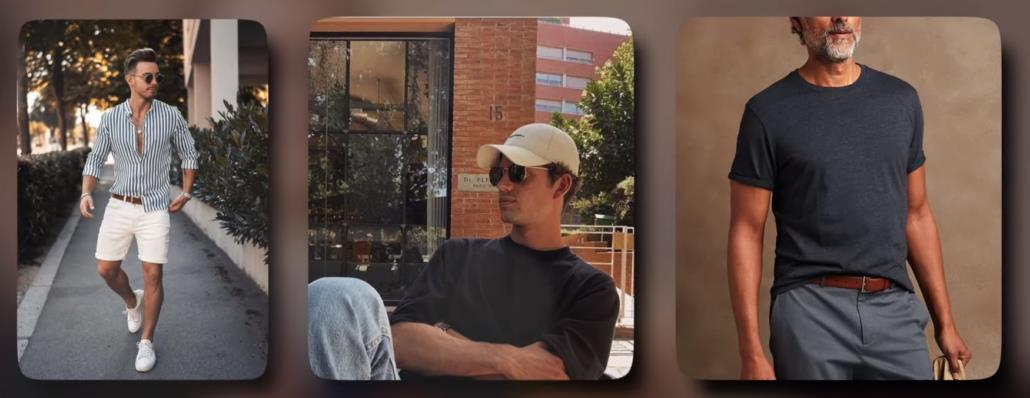
Wearing pieces like T-shirts and baseball caps originally does not give an OMA style.
This is especially true with the increasing emphasis on faking OMA looks using cheaper, fast fashion, or other off-the-rack garments. After all, these products are actually antithetical to what the true Old Money aesthetic really means.
Conclusion
In conclusion, then, we’ll say that classic style affords the wear of, with a similar wearing experience, aesthetic, and perception to OMA; however, we believe that classic style also provides more versatility, personality, and attainability.
So, no matter how trendy or hot the Old Money aesthetic might be right now, we’re definitely going to remain a channel that is focused, first and foremost, on classic style. While the Venn diagram between OMA and classic style does have considerable overlap, there are also definitely key differences that set them apart.
With that said, how did our conclusions on this subject compare to yours? Let us know in the comments below!
Outfit Rundown
Today, I’m wearing an ensemble consisting of a jacket and odd trousers, featuring a navy blue, double-breasted blazer with gold buttons that is definitely indicative of the Old Money aesthetic as it’s related to nautical pursuits.
Meanwhile, my two-toned Winchester shirt in light blue featuring a white collar and cuffs is also indicative of Old Money, and it, as well as my vintage silk tie in red, blue, and gold tones, both come from the classic American brand Brooks Brothers.
Meanwhile, my trousers are in plain medium brown, and my shoes are Adelaide-styled Oxfords featuring some broguing in a dark chocolate brown, a conservative color from the Swedish brand Skolyx.
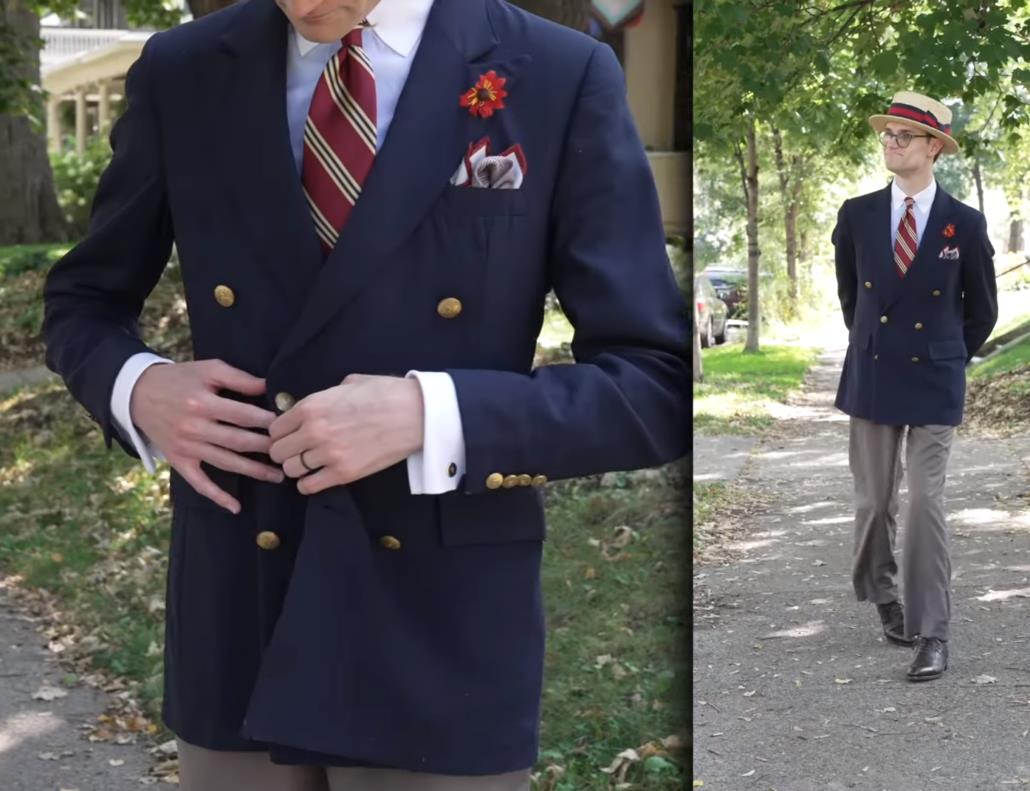
Preston exudes an Old Money Aesthetic look with his nautical double-breasted jacket that matches his light brown trousers.
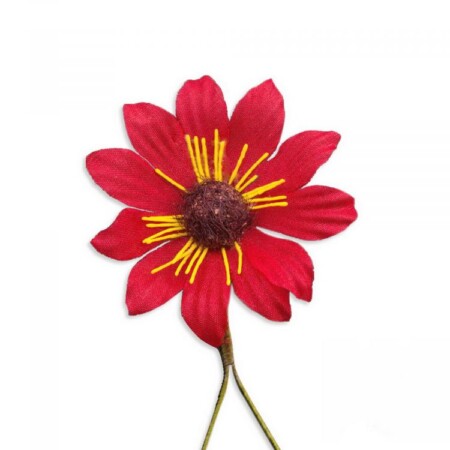
Fort Belvedere
Red Exotic Caribbean Boutonniere Lapel Flower
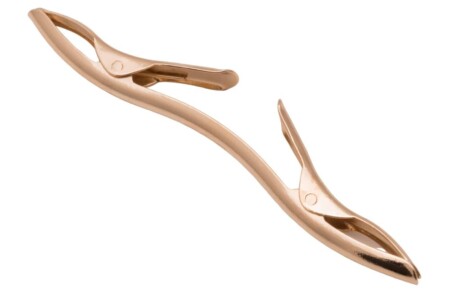
Fort Belvedere
Large Collar Clip in Yellow Gold for Medium to Larger Spread Collars
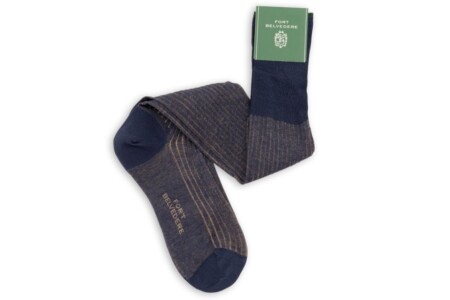
Fort Belvedere
Navy and Khaki Shadow Stripe Ribbed Socks Fil d'Ecosse Cotton
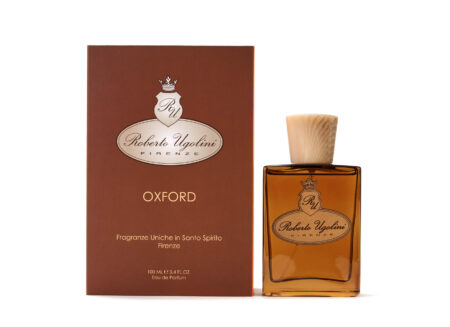
Fort Belvedere
Roberto Ugolini – Oxford
My cufflinks today are also vintage, and they feature burgundy-colored stones surrounded by gold to harmonize with both my tie and the other gold elements in my outfit.
My pocket square is also vintage, and it’s in burgundy and a very pale light blue to harmonize with other colors in my outfit, and it also features a classic glen check pattern.
In the outdoor footage, I’m also wearing a classic Old Money hat, the straw boater, which features a red and blue hatband.
Rounding out the outfit today, all the rest of my accessories are from Fort Belvedere. These would include my red, exotic, Caribbean boutonniere, my yellow gold collar clip, and my two-tone, shadow-striped socks in khaki and navy.
For my fragrance, I’ve gone for what is perhaps the quintessential fragrance in the Roberto Ugolini collection, the scent Oxford, which is the favorite of Roberto Ugolini himself. The scent is rich, warm, and complex but definitely speaks to the tradition of craftsmanship and hearkens back to an Old Money aesthetic. And, of course, I’m wearing Oxfords today, so this seemed like a natural choice for that reason as well.
So, for all of the accessories I’m wearing in today’s guide, as well as a wide array of other classic men’s accessories, many of which could fit into the Old Money aesthetic, and for fragrances from the Roberto Ugolini collection, you can take a look at the Fort Belvedere shop.
https://www.gentlemansgazette.com/classic-style-not-old-money/
Did you miss our previous article...
https://manstuffnews.com/men-fashion/tweed-guide-the-curiously-compelling-story-of-tweed
 Backyard GrillingWeekend WarriorsAdvice from DadBeard GroomingTV Shows for Guys4x4 Off-Road CarsMens FashionSports NewsAncient Archeology World NewsPrivacy PolicyTerms And Conditions
Backyard GrillingWeekend WarriorsAdvice from DadBeard GroomingTV Shows for Guys4x4 Off-Road CarsMens FashionSports NewsAncient Archeology World NewsPrivacy PolicyTerms And Conditions
